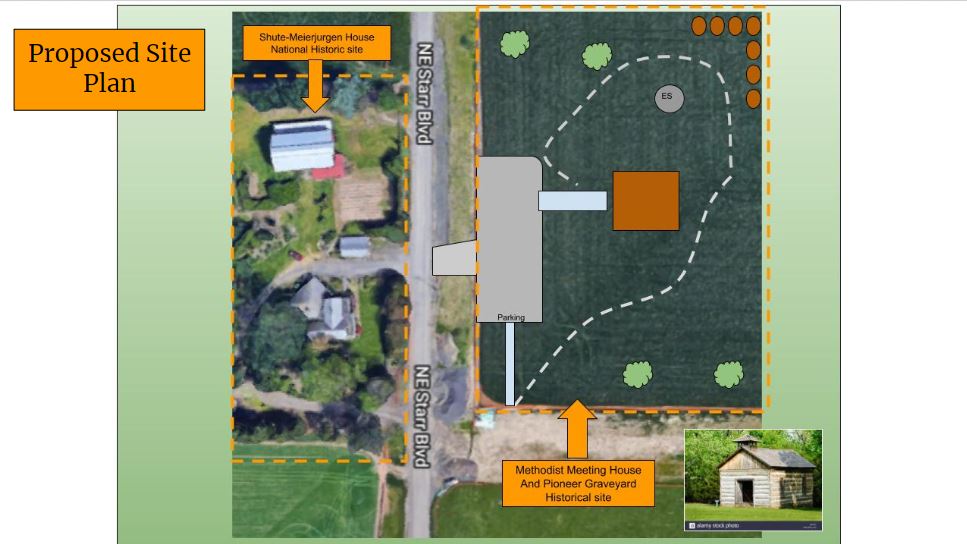Methodist Meeting House Historical Site Needs Your Voice and Support Ahead of Destruction
/The date is October 7th, 2018. On October 17th, 2018 at 6:30 at night the Hillsboro Landmarks Advisory Committee will hold a meeting at the first floor of the Civic Center located at 150 East Main Street, Hillsboro, Oregon. At this meeting plans for a monument for the incredibly important Historical location known as the Methodist Meeting House will be discussed.
Your attendance is requested if you are at all able to make it there.
The world’s largest developer of Industrial Parks, Majestic Development, has plans to build on this site and to excavate the land of the Methodist Meeting House which includes at least 5 graves, those all belonging to the children of Joseph and Virginia Meek; some of the initial settlers and leaders in the Oregon country.
This is a complex yet simple story. Perhaps watching a video will help explain this to you all better. Spend 3 minutes on this as needed.
Here is a timeline Summary about the Methodist Meeting House:
We know the site is incredibly important and while we can not bring back the past we have two groups leading the way to protect the site; the Meek Plains Historians and the Five Oaks Discovery Coalition.
In 2004 Tom Hughes, who was the Mayor of HIllsboro, on behalf of the City, agreed to a contract with the State of Oregon regarding this historic site. In essence Hillsboro wanted more land for Industrial Development to be taken from protected farm land and converted to Industrial land. The City and landowners also wanted to get the SIPS program treatment for the sites , which allows for Millions in tax giveaways. In order to get the zone change and the tax breaks for corporations, the land owners becoming multi-millionaires at the same time, Mayor Hughes wrote a letter to the State of Oregon thereby sealing the deal.
That letter included the identification of a 1 acre lot upon which a task force and the city believed the Methodist Meeting House was located. The letter also assured that Hillsboro would require the landowners, during the time of development, to require a Monument be built upon the land commemorating the Methoidist Meeting House and the associated graves and that the Hillsboro Landmarks Advisory Comittee would approve the design for such a Monument. That 1 acre lot is as show below:
The site of the Methodist Meeting house is directly across from the Shute-Meierjurgen House, a National Historic Site, which is located at 4826 NE Starr Blvd., Hillsboro, Oregon 97124.
HERE IS WHERE WE ARE NOW
At this juncture the Developer, Majestic Westmark, has applied for about 850,000 SF of buildings to be placed over the site of the Methodist Meeting House. They are NOT RECOGNIZING THE MMH SITE and at this time they DO NOT INTEND to honor the City of Hillsboro’s laws and regulations as provided for in our Comprehensive Codes.
YOU CAN GET INVOLVED AND HAVE YOUR VOICE HEARD
SIGN THE PETITION ONLINE
Come to the Hillsboro Landmarks Advisory Committe Meeting October 7th at 6:30 PM at the Hillsboro Civic Center
Follow Our Facebook Page For Future Hearings and Meet Ups!
Our groups are in this for the long haul and will do whatever we can to watch over the site and make sure a good outcome is arrived at. The site will hopefully have a future long after we are all gone and will become a place for future generations to come and learn about our early history. We hope thay will understand the importance of the Tualatin Plains and the Methodiost Meeting House, the early pioneers, and the role that the native poeple from all tribes played in our territory and statehood during this time of survival and change.
Thank you all for your support!


























































































